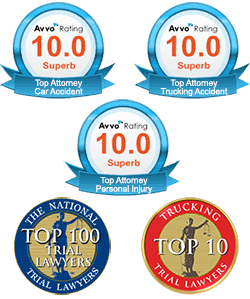 Like other aspects of the trucking industry, technology has had a significant impact on how drivers are coached.
Like other aspects of the trucking industry, technology has had a significant impact on how drivers are coached.
More fleets are employing in-cab driver coaching to help enforce safe driving behaviors, reduce accidents, and improve drivers’ overall performance thanks to the most recent advancements in onboard video and artificial intelligence.
While acknowledging that getting drivers’ approval of cameras and related technologies might occasionally be difficult, motor carriers and technology suppliers argued that giving drivers timely feedback on their performance can enable them to take a more proactive approach to safety.
Fleets can identify drivers who are most likely to get in an accident and train them to change risky habits before it’s too late using computer-generated driver scorecards.
Initial Suspicions
Chalk Mountain Services’ safety director, David Serach, claimed the company made efforts to reassure its drivers that the method it was studying posed no risk. The Texas-based business has around 500 drivers working for it and a fleet of about 275 tractors and 900 bulk tank trailers. Drivers were included in the testing so that it could receive their opinion on what they liked and disliked about the system, according to Serach.
Initially, some drivers were suspicious of the technology because they believed that the notifications meant they were in trouble. Serach, however, said that the drivers were informed that receiving an in-cab alert did not inevitably result in a mark against their driving or a summons for in-person instruction.
In the beginning, he added, the company wanted to be really straightforward and transparent with the drivers. It wasn’t using a system to trick or catch anyone in some way.
Case Study Results
The Chalk Mountain Services opted to put into use the Samsara-provided system, which comprises inward- and outward-facing cameras and warnings for speeding, distracted driving, and following too closely after a testing period of around nine months.
Implementation over the entire fleet was finished in February 2021. Even while the system wasn’t in place the entire year, Serach claimed it nevertheless resulted in significant safety improvements over the previous year.
When compared to the prior year, the company’s costs for preventable accidents in 2021 were down 86% and those for workers’ compensation were down 43%, according to Serach.
In order to validate claims that fleets may minimize losses by 50–80% using its system, Nauto, a startup that develops artificial intelligence (AI) and computer vision technologies focused at recognizing unsafe driving behaviors in real-time, recently undertook a case study with two fleets.
A prominent package delivery company was the first. Using its three-year loss history over the entire fleet, Nauto established a baseline. Then, for a six-month period, it deployed its system with in-vehicle alerts (IVA) across 100 vehicles. Distractions overall decreased by 49.6% while extreme distractions fell by 80%.
The use of cell phones declined by 41%, and going over the posted speed limit decreased by 26%. According to Nauto, 95% of drivers improved their performance with minimal management involvement, allowing the fleet to focus on the 5% of drivers who actually required in-person coaching.
The delivery fleet plans to equip another 5,000 vehicles with the technology for additional testing after collision frequency dropped by 82 percent. Based on the study’s findings, it estimates that installing the technology throughout its whole fleet will save US$239 million.
80 percent of drivers in the other company’s last mile delivery fleet responded to in-vehicle warnings without management involvement. Five months after the initial implementation, the number of alerts dropped from 6.05 per driving hour to 0.26 per hour. After installation, there were 92 percent fewer distractions and 28 percent fewer collisions in the last mile fleet. Nauto also observed that when IVAs were turned on, distracting incidents were significantly reduced.
From the Company’s Viewpoint
Deryk Gillespie, vice-president of IT and innovation at Trimac, asserts that the fleet has experienced real-time in-cab coaching benefits using the Isaac Coach from Isaac Instruments.
Results didn’t appear right away. Trimac ran a pilot with 150–200 trucks and gathered information for about a year. Gillespie claims that once a baseline had been established, fuel economy started to increase as a result of the real-time coaching and better driving. Some trucks had a significant improvement in fuel efficiency of 7–11%. Using the in-cab coaching, the fleet average was between 2 and 3 percent, he continues.
From the Insurance Viewpoint
Technologies that track driving behavior are welcomed by insurance firms. Just don’t anticipate a sudden reduction in premiums. Fleets won’t see their insurance rates cut unless they can demonstrate their driver coaching system is actually reducing claims, according to John Farquhar, risk solutions consultant with Summit Risk Solutions.
Contact a Kansas City Truck Accident Attorney
Our company has spent more than two decades assisting persons hurt in vehicle accidents obtain compensation for their injuries. Nothing less is what you deserve. We can assist you in obtaining the full amount of compensation to which you are entitled.
Learn how our experience and expertise in truck accident cases can benefit you by calling (816) 221-0501.




